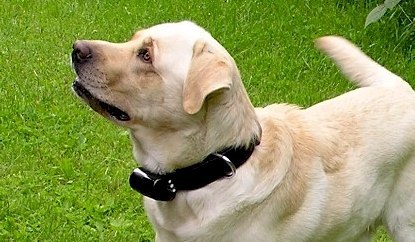Kennel club chiefs have welcomed the Scottish Government’s announcement on a set of dog welfare measures, including restrictions on the use of electric shock collars.
While the government has stopped short of imposing a complete ban on the controversial items, the Kennel Club and Scottish Kennel Club say they hope law changes will “send out a strong message” that such methods should be used only as an exception.
The collars — which deliver a shock to the animal and are used by some as a training aid — will only be allowed to be used under the guidance of an authorised person.
Other animal welfare organisations, including the Dogs Trust, said they were disappointed that a complete ban had not been imposed when the measure was announced among a series of dog welfare measures.
While the Kennel Club has lobbied for a total ban on the sale and use of such devices, given mounting evidence that they are used inconsistently even when under supervision and have a negative effect on dog welfare, both the KC and SKC said they believe the regulations due to be introduced will send a strong message to Scottish dog owners that training a dog with an electric shock stimulus should be an exception and should not be considered to be the norm.
Kennel club secretary Caroline Kisko said: “We firmly believe that positive, reward-based training methods are far more effective in correcting unwanted behaviour, which is often the reason cited for their use.
“Some of the country’s best trained dogs, such as police dogs trained by Police Scotland, are trained without the use of these devices, which goes to show how unnecessary they are.
“While we would prefer to see an outright ban on the sale and use of electric shock collars in Scotland, as was introduced in Wales a few years ago, the move by the Scottish Government does send a clear message that these are not devices that should be widely used and the new laws will undoubtedly help to reduce their use and make them harder to get hold of.
“It is important however that the Scottish Government specifies exactly who will be considered an ‘authorised’ person to ensure that any new laws being brought in are as effective and enforceable as possible.”
The organisation has, however, given full support to the Scottish Government’s decision to introduce an exemption for working dogs under their tail docking regulations, which will allow for certain working dogs to be docked at birth to avoid tail injury in later life.
Ms Kisko added: “Whilst we support UK-wide bans on tail docking for aesthetic reasons alone, we have long been disappointed that, unlike in England and Wales, the Scottish Executive did not make any exemptions for working dogs when they banned tail docking under the Animal Health and Welfare (Scotland) Act.
“However we are heartened that our views, supported by the evidence on the tail injuries sustained by working dogs, have been taken on board and that an exemption for working dogs will be introduced. This is undoubtedly the right decision and the Minister has the full support of the Kennel Club and Scottish Kennel Club.”










